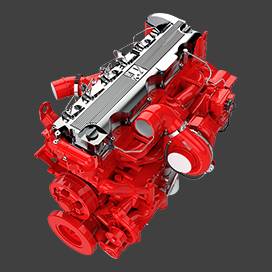Pro . 25, 2024 17:41 Back to list
Understanding Brake Drum and Lining Components for Improved Vehicle Safety and Performance
Understanding Brake Drum and Lining Key Components for Safe Vehicle Operation
Brake systems are vital components of any vehicle, ensuring safety and control during operation. Among the various parts of a braking system, the brake drum and lining play crucial roles in providing the necessary stopping power. Understanding their functions, materials, and maintenance is essential for vehicle safety and performance.
What are Brake Drums?
A brake drum is a cylindrical component that forms part of a drum brake system. It is typically made of cast iron or aluminum, designed to withstand the high temperatures generated during braking. When the driver applies the brakes, the brake lining, which is mounted on the brake shoes, presses against the interior surface of the brake drum. This friction is what slows down and eventually stops the vehicle.
How Brake Drums Work
The operation of a brake drum is relatively straightforward. When the brake pedal is pressed, hydraulic pressure is generated in the brake system. This pressure causes the brake shoes, which are equipped with the brake lining, to move outward against the inside of the brake drum. The friction created between the lining and the drum surface converts kinetic energy into thermal energy, which slows down the vehicle.
Drum brakes are often used in the rear braking systems of vehicles, particularly in older models and some compact cars. They are favored for their ability to provide strong braking force at low speeds and their effectiveness in holding the vehicle stationary when parked. However, they tend to generate more heat than disc brakes, making effective cooling mechanisms crucial to prevent brake fade.
Brake Lining The Unsung Hero
Brake linings are the material bonded to the brake shoes that generate the necessary friction against the brake drum. The composition of brake lining material is critical, as it must withstand extreme temperatures, resist wear, and provide effective stopping power. Traditionally, linings were made from asbestos, but due to health concerns related to asbestos exposure, modern formulations typically include organic materials, semi-metallic compounds, or ceramic materials.
brake drum and lining

The choice of brake lining material affects various performance characteristics, including noise levels, dust production, and stopping distance. For instance, semi-metallic linings offer excellent performance and heat dissipation but can generate more noise and dust. Organic materials, on the other hand, provide quieter operation and less dust but may wear out faster than their metallic counterparts.
Maintenance of Brake Drums and Linings
Proper maintenance of brake drums and linings is essential for ensuring long-term vehicle safety and performance. Regular inspections should be performed to check for signs of wear or damage. Over time, the brake drum can develop grooves or become warped, while the brake lining will wear down due to friction. If either component is found to be compromised, replacement is necessary to maintain braking efficiency.
Drivers should pay attention to warning signs indicating potential brake issues, such as
1. Squeaking or grinding noises These sounds may indicate worn brake lining that needs replacement. 2. Vibration during braking This could suggest warped brake drums or uneven wear on the lining.
3. Longer stopping distances If a vehicle takes longer to stop or feels less responsive during braking, it may be time for an inspection.
Conclusion
In conclusion, the brake drum and lining are integral components of a vehicle's braking system, contributing immensely to safety and control. By understanding how these parts operate and recognizing the importance of regular maintenance, drivers can help ensure their vehicles remain safe and reliable. Regular checks, along with timely replacements, can prevent potential brake failures and enhance overall driving safety. With advancements in technology and materials, modern brake systems continue to evolve, offering improved performance and reliability, making understanding these components more essential than ever.
-
Seamless International Solutions for Global Business & Travel
NewsAug.08,2025
-
Premium Volvo Brake Drums: Truck, Semi & VNL Performance Parts
NewsAug.07,2025
-
BPW Axles & Suspensions | Quality Running Gear for Trailers
NewsAug.06,2025
-
Premium Iveco Brake Drum - Durable & Reliable Performance
NewsAug.05,2025
-
High-Performance Nissan Brake Drum | Durable Braking
NewsAug.03,2025
-
2014 Mitsubishi Mirage Rear Brake Drums | Durable & Precise
NewsJul.31,2025
